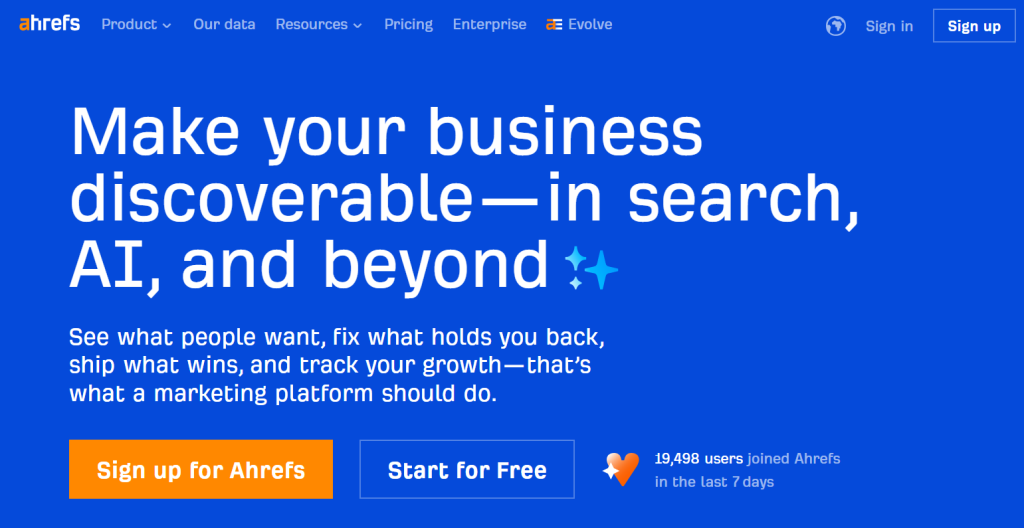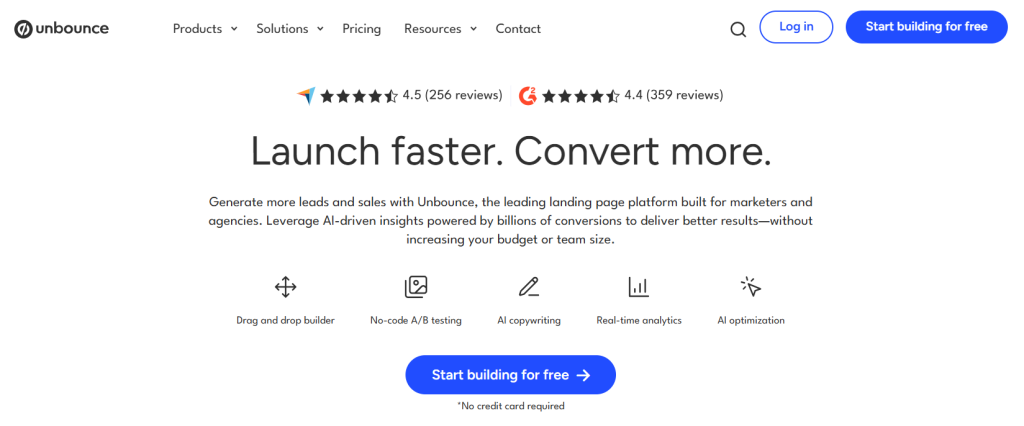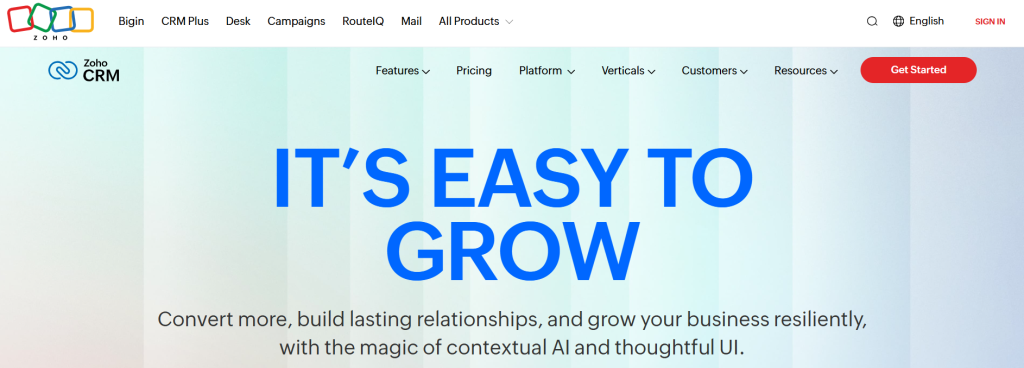For tech and software companies, filling the pipeline is harder than ever. Buyers take months to evaluate vendors, and the sales cycles often stretch from six months to over a year. With so much pressure on margins and growth, a strong lead generation strategy is no longer optional. It’s survival.
The old playbook doesn’t cut it anymore. Spray-and-pray outreach and one-off events bring fewer qualified leads.
Meanwhile, competition across the tech industry keeps intensifying. That’s why firms are shifting toward smarter lead generation tools and approaches that capture interest at every stage of the buyer’s journey.
In this guide, we’ll look at how sales and marketing teams can adapt to these new realities. You’ll see what no longer works, which modern strategies help generate high quality leads, and which tools matter most in the software industry today.
Why software companies generate leads in a different way
Software companies face a tougher challenge than most industries when it comes to building a steady pipeline.
That’s why traditional tactics rarely result in successful lead generation for the software industry.
#1 Long cycles
Compared to other sectors, software deals take far longer to close. The average sales cycles in 2025 sit around 90 days, but enterprise contracts can stretch to 270 days or more for deals above half a million dollars.
Research shows 63% of B2B software prospective customers take at least three months to make a decision, while 20% need more than a year.
For sales teams, that means pipeline management is about keeping enough opportunities alive to avoid gaps in revenue.
#2 Multi-stakeholder buying committees
On average, 10-11 stakeholders weigh in on high-value purchases, including CFOs and legal teams. This means sales and marketing teams can’t rely on one champion.
Instead, they must run targeted marketing campaigns aimed at different roles within the same account.
Convincing finance requires ROI numbers, IT needs to see integrations, and end users want to know how the product solves their pain points.
The ability to engage visitors across these layers determines whether the company can generate quality leads that move further down the sales funnel.
#3 Trust-heavy purchase decisions
In the tech industry, credibility often makes or breaks a deal. Nearly 40% of buyers say vendor reputation is their top selection factor, while 82% check peer reviews and testimonials before moving forward.
For tech companies, this means social proof must be part of the lead qualification process.
Case studies, certifications, and valuable resources like benchmarks or ROI calculators help reduce risk for potential customers.
Without that trust, even well-targeted campaigns fail to convert into valuable leads or new leads that sales can nurture.
The old lead generation efforts are dead
The playbook that once worked for tech companies now falls flat.
Buyers in the software industry expect personalized, multi-touch engagement that gives them valuable insights before they ever talk to a rep.
Cold email decline
Cold outreach has hit a wall. In 2025, only 5.1% of cold emails get a reply, and open rates dropped to 27.7% from 36% the year before.
Nearly 95% of cold email attempts produce no response at all, while 17% never even reach the inbox due to filters and spam fatigue.
Campaigns with personalization can lift reply rates to 18%, but only a small fraction of senders invest the time to do it right.
The result? Most outbound efforts fail to generate qualified leads.
Static PDFs and content fatigue
Static PDFs and generic white papers no longer move the needle. Conversion rates for SaaS PDFs and eBooks sit at around 1.2%, far behind interactive demos or webinars that capture leads at 2-3x higher rates.
Buyers don’t want another brochure. They want relevant content that answers their pain points and pushes them further along the buyer’s journey.
For software firms, this shift makes interactive tools, lead generation forms, and live engagement far more valuable than the old static assets.
Single-touch campaign failure
One-and-done campaigns are obsolete.
A single cold email, social ad, or mailer typically converts under 2% of B2B recipients. In contrast, multi-touch campaigns across 3-5 channels drive conversion rates nearly 287% higher.
Today’s buyers expect a sequence: a webinar invite, a case study, a retargeting ad, and a personal email.
Research shows it takes 8-12 touches before potential clients engage. That makes nurturing across the full sales funnel essential for effective lead generation in the modern tech industry.
Modern lead gen strategies for 2025-2026
The future of B2B lead generation in the software industry is defined by personalization, account focus, interactivity, proof, and AI.
Legacy tactics no longer keep pace with buyer expectations, but these five strategies consistently drive more leads, higher conversion rates, and better ROI for technology companies competing in crowded markets:
#1 Personalization at scale
Modern buyers expect content and outreach tailored to their pain points.
Studies show 76% of B2B buyers now expect more personalized attention than they did three years ago, and 72% will only engage if messaging feels highly tailored.
Personalization at scale can lift sales productivity by 20% and deliver 18% higher marketing ROI.
With AI-driven lead generation software, firms use intent data and lead scoring to match content with the right target audience at the right stage of the sales process.
Companies using advanced personalization report win rates 38% higher than generic outreach.
#2 Account-based marketing (ABM)
ABM has become the backbone of outbound lead generation in the tech industry. Research shows 79% of sales opportunities in B2B organizations now come from ABM, and engagement with target accounts rises by 83%.
Within the first year, 60% of firms see at least a 10% revenue increase. For sales and marketing teams, this means running targeted marketing campaigns across email, social media ads, and personalized landing pages on the company’s own website.
ABM also delivers higher-quality marketing qualified leads, which translates into faster wins for the sales team.
#3 Interactive content
Static content struggles to convert, but interactive experiences outperform. Studies show interactive formats generate 2x the conversions of static PDFs, while 81% of marketers say they grab attention more effectively.
According to Demand Gen Report’s 2025 survey, buyers rate tools like ROI calculators or live demos as 70% more effective for learning during the buyer’s journey. Engagement jumps by over 50% when software firms host webinars or demos instead of pushing static brochures.
These tactics improve lead capture and lead qualification, while supporting search engine optimization goals that bring in organic traffic and steady new leads from search engines.
#4 Social proof
Trust is currency in software buying.
Many software buyers rely on peer experiences and testimonials before making a purchase. What’s more, third-party ratings and reviews can lift your conversion rates, especially in late-stage deals.
That’s why materials like customer success stories and video reviews are vital for engaging prospective customers.
Programs like referral marketing also strengthen credibility and generate valuable leads that shorten long sales cycles.
In crowded markets where every vendor looks alike, social proof helps differentiate and deliver sales leads that are more likely to close.
#5 AI-assisted targeting
AI has become a force multiplier in lead identification and targeting. Roughly three quarters of sales and marketing teams are using AI. AI-driven segmentation can increase win rates and makes companies more likely to acquire new customers compared to traditional targeting.
Predictive analytics highlights which target customers are most ready to buy, while lead scoring powered by AI shows who to prioritize in the sales funnel.
Adding AI to the lead generation process also optimizes when to offer free trials or other valuable resources, helping firms nurture leads and convert potential clients into deals.
Recommended tools & lead generation services
The right stack of lead generation tools helps sales and marketing teams capture attention, qualify interest, and move deals through the sales process.
Below are key categories with examples of tools and when they work best.
Outreach automation
Cold outreach still plays a role in outbound lead generation, especially for B2B lead generation where one-to-one conversations open doors with the right target accounts.
The difference in 2025-2026 is how those emails are delivered.
Tools like Woodpecker take the guesswork out of campaigns by combining automation with built-in deliverability safeguards.
Woodpecker lets a sales team set up cold email campaigns in minutes. From onboarding to sending, the process is structured:
- get domains and inboxes,
- warm them up automatically,
- find B2B leads in a database of over one billion contacts,
- then craft personalized outreach.

The platform also includes free email verification, catch-all checks, and a deliverability monitor to keep messages away from spam folders.
Beyond email, Woodpecker now supports multi-channel outreach.
You can add LinkedIn invites or profile visits into the same sequence, so campaigns feel less like blasts and more like real conversations.
For agencies, there’s even a dedicated panel to manage client campaigns at scale.
What makes Woodpecker stand out among lead generation tools is how it protects deliverability.
Features like inbox rotation, adaptive sending, and warm-up routines build sender reputation while keeping outreach safe.
According to users, this makes it one of the few platforms that truly balances automation with personalization, helping sales leads become real conversations instead of ignored emails.
Woodpecker also integrates directly with CRMs like HubSpot and Pipedrive, as well as scheduling tools like Calendly and productivity platforms like Google Sheets. This means the entire sales process, from lead capture to follow-up calls, stays connected.
In short, Woodpecker gives sales and marketing teams the infrastructure to run scalable and personalized outreach. For technology companies struggling to reach their target customers, it’s a way to build campaigns that feel human, while still being efficient enough to deliver more leads month after month.
Google Ads and paid search
Paid channels are one of the fastest ways to capture demand.
Running Google Ads helps reach potential customers actively searching for software solutions. Paired with remarketing and social media ads, these campaigns bring in new leads who are already signaling intent.
Ads also improve visibility in search engines, complementing long-term search engine optimization efforts that lift search engine ranking and drive organic traffic.
Tools to consider using:
- Google Ads
- Microsoft Advertising (Bing Ads)
- LinkedIn Ads
- Meta Ads (Facebook & Instagram)
- AdRoll

Content marketing & inbound marketing
Publishing relevant content builds credibility. A strong content marketing program supports inbound marketing, drawing in prospective customers through SEO and thought leadership.
Well-planned blogs on your own website, combined with distribution across social channels, attract marketing qualified leads who are already engaged in the buyer’s journey.
Firms can also host webinars and demos to nurture leads and share valuable insights that help convert them into qualified leads.
Tools to consider using:
- HubSpot
- SEMrush
- Ahrefs
- Moz
- BuzzSumo
- Contently
- WordPress
- Wistia

Lead magnets & landing pages
Offering valuable resources such as free trials or ebooks works as a lead magnet to capture leads. Paired with optimized landing pages built in tools like Unbounce or Instapage, software firms can maximize lead capture rates.
Interactive calculators or lead generation forms also reveal lead identification signals that improve the quality of follow-up.
These tactics generate high quality leads by attracting existing and potential customers ready to take the next step.
Tools to consider using:
- Unbounce
- Instapage
- Leadpages
- Typeform
- involve.me
- OptinMonster
- Hello Bar
- Outgrow

CRMs & customer data tools
Once leads are in the system, proper management is critical. CRMs such as HubSpot, Pipedrive, or Capsule CRM help track every interaction and give full visibility into the sales funnel.
These platforms also connect with lead generation software for lead qualification and campaign reporting.
A good CRM supports customer success by keeping data in one place and making sure no potential clients fall through the cracks.
Tools to consider using:
- HubSpot
- Pipedrive
- Capsule CRM
- Salesforce
- Close CRM
- Zoho CRM
- Microsoft Dynamics 365
- Copper

Metrics and optimization
A modern lead generation strategy is only as strong as the numbers behind it.
For technology companies, tracking the right data lets the sales team focus on valuable leads and adapt campaigns that actually work.
These are the core metrics we recommend measuring and refining.
Cost per lead (CPL)
Know how much it costs to bring in new leads. Comparing CPL across channels, like social media ads and referral marketing, shows where you’re attracting high quality leads and where you’re wasting budget.
Lead velocity and pipeline value
Lead velocity measures how fast sales leads move through the sales funnel. Combined with pipeline value, it highlights whether targeted marketing campaigns are driving more leads who can convert into revenue.
Lead qualification and scoring
Not every contact is worth pursuing. Use lead scoring to separate marketing qualified leads from unfit prospects.
Tracking lead qualification metrics helps sales and marketing teams focus on target accounts with the highest chance of becoming prospective customers.
Conversion rates across stages
Measure how well you capture leads with forms, how many become target customers, and how many close.
Look at each stage of the buyer’s journey to spot where drop-offs occur – whether in lead capture, demo requests, or when you offer free trials.
Sales cycle length
In the tech industry, long sales cycles are normal, but tracking them reveals how well your team is nurturing leads.
If deals stall, add relevant content or share valuable insights to keep existing and potential customers engaged.
Continuous optimization
The best companies don’t stop at reporting.
They:
- test landing pages,
- refine search engine optimization,
- improve search engine ranking,
- and adjust messaging to align with buyer pain points.
Each iteration feeds the next campaign, making effective lead generation repeatable.
Check this out: here’s what we learned building our animated landing page
Should you work with a lead generation company?
For many tech companies, the question comes down to time and expertise. A specialized lead generation company can bring:
- proven processes,
- access to data,
- and tested campaigns that help you generate quality leads faster.
The trade-off is cost and control.
Outsourcing may deliver more leads in the short term, but it’s not a substitute for building in-house capabilities.
The best approach is often hybrid: use external partners to scale outbound lead generation or social media ads, while developing your own lead generation forms, own website content, and search engine optimization for sustainable growth.
Check this out: things to do before hiring a lead generation agency
Next steps for your marketing strategies
The path forward is clear: refresh your playbook, align your sales and marketing teams, and commit to a modern, data-driven stack of lead generation tools.
Thanks to combining personalization, interactivity, and proof, your firm can consistently generate high quality leads and convert them into lasting customer success.
And if you’re ready to start with smarter outreach, a tool like Woodpecker can help you run personalized, multi-channel campaigns that land in inboxes.
It’s one of the easiest ways to put modern outbound lead generation into practice and begin building conversations with your next set of qualified leads.

